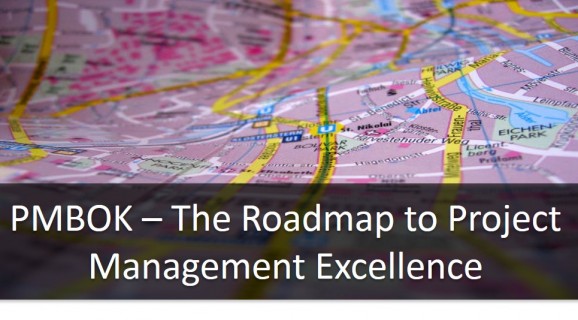
In this series of blogs, we’ve introduced the concept of project management governance and how a framework is essential to ensure that project objectives are executed in a cost effective and timely fashion. Having discussed how PRINCE 2 methodologies fit into this framework, the subject would certainly not be complete without taking a little time to examine how and why PMBOK fits into the project management equation.
Why PMBOK?
PMBOK has existed longer than PRINCE 2, and could be considered as a framework into which PRINCE 2 (and other project management methodologies) dovetails. As such, PMBOK provides a structure into which the project manager can slot their own processes and roles.
In a sporting context, PMBOK might be considered as the rugby pitch markings and law-book while PRINCE 2 is the gameplay, strategies, formations, and substitutions selected by each team. This analogy offers us an insight into the two biggest strengths of PMBOK:
- Providing a framework for the life cycle of a project
- The areas of project management expertise required for successful project delivery
The project life cycle
The project life cycle takes the project from its inception to final delivery of objectives and closing. There are four stages in the life cycle, and at each stage a distinct set of processes, procedures, and practices will be utilised and objectives achieved:
Stage 1: Initiation
- Definition of the scope of the project
- High-level budgets
- Indicative time frame
- Organisation of the project and its management
- Establishing the project charter
Stage 2: Project Planning
- Develop the project management plan
- Produce detailed schedules
- Produce detailed budgets
- Describe and plan resources
- Risk analysis
- Define quality requirements
- Plan methods and channels of communication
- Plan procurement
Stage 3: Execution
- Change management
- Quality control
- Project reporting
- Delivery of outcomes and outputs
- Management of contract
- Team and HR management
- Stakeholder management
Stage 4: Closing
- Final closing
- Reporting
- Handover to client
- Lessons learned
- Release of resources
Throughout the project life cycle, there is a continuous and constant need to monitor and control every practice, process, policy, and procedure.
The project life cycle, and how each stage slots into it, is shown in the following diagram:
Areas of project management expertise/knowledge
While I have discussed the need for a framework and methodology of project management to be in place – and this might be considered to be the foundations of effective project management governance – the effective delivery of project objectives will not occur unless the framework and methodology is accompanied by project manager excellence.
PMBOK provides guidance on the 10 core areas of knowledge in which an organisation or client should require the project manager (and contractors and sub-contractors) to not only be proficient, but expert.
Integration
A key responsibility of the project manager or project director, this covers the interaction between all functions and stages associated with the project.
Scope
The definition of project deliverables and items excluded, dictating the specifications of the project.
Timetable
Defining and controlling the project timetable from initiation to final close.
Budget
Management of costs, forecasts, and development of project budget.
Quality
Producing the definition of project quality, and procedures and policies to ensure that quality is achieved and maintained.
Human Resources
Management of the skills and abilities required to deliver objectives, and how human resource requirements are sourced and managed. This includes definitions of roles and responsibilities.
Communications
Identifying all communication needs and ensuring that appropriate channels of communications are used in the reporting of progress, management of record keeping, lessons learned, and personal development of human resources.
Stakeholders
This refers to all who are either directly or indirectly involved with the project and have responsibilities for or will be impacted by project deliverables.
Risk management
Identifying, quantifying, and managing all risks associated with the project and agreeing actions to be taken to minimise such risks. This is a constant and continuous project specific undertaking.
Procurement
This covers the identification of the goods and services required for effective project delivery, and includes contract management.
PMBOK as a Project management framework
PMBOK creates an effective management structure that standardises the approach to project governance. It facilitates the sharing of PRINCE 2 methodologies (and other project management methodologies) as well as techniques, tools, and resources. This creates a centre of excellence that can only be sustained by organisations with sufficient resources. However, PMBOK only provides a certain amount of guidance about project governance and benefits. PRINCE 2 completes the required knowledge, policy, and process base.
Hence, project governance that includes the facets of both PMBOK and PRINCE 2 provides the complete solution to ensure timely and cost effective delivery of project objectives.

